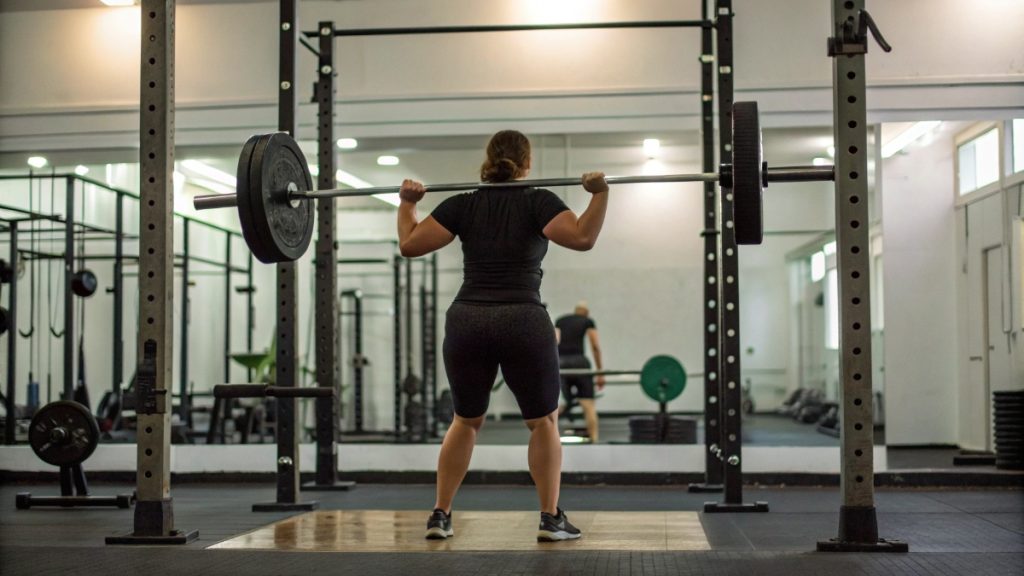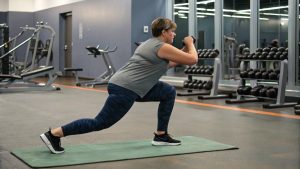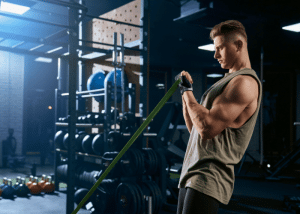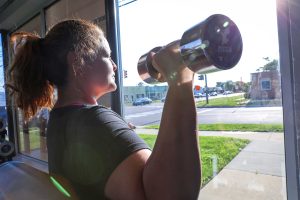If you’ve ever wondered where you stack up in the gym or on the field of play, understanding weightlifting strength standards can be a powerful way to benchmark your performance. In this article, we’ll dive into how you measure up against real-world lifters, using data from free resource hubs like StrengthLevel. We’ll break down key lifts, what the numbers mean, and how you can use them to set intelligent goals. Whether you’re training for sport, health, or just getting stronger, these insights apply.
What Are Strength Standards and Why They Matter
Strength standards represent benchmarks derived from thousands (or millions) of lifters’ one-rep max (1RM) performances relative to bodyweight and gender. In the case of StrengthLevel, they parse data from over 134 million lifts. These tables allow you to classify your performance into levels like Beginner (stronger than ~5% of lifters), Novice (~20%), Intermediate (~50%), Advanced (~80%), and Elite (~95%).
Why is this useful? Because rather than guessing whether a 300-lb bench is “good,” you can see how it stacks up among peers, adjusting for bodyweight.
Bench Press Standards
Let’s start with the classic upper-body test: the barbell bench press. According to StrengthLevel’s tables for males:
- Beginner ~ 103 lb 1RM.
- Intermediate ~ 217 lb 1RM.
- Elite ~ 372 lb 1RM.
The table by bodyweight also shows, for example, a 200-lb male bodyweight would aim at ~312 lb for Intermediate and ~382 lb for Elite.
What to take away:
If you’re pressing ~200-225 lb on the bench and weigh ~200 lb, you’re likely in the Intermediate tier (solid!). If you’re pressing under ~140 lb, you may still be in the Novice/Beginner zone, totally fine, this is your starting point.
Application:
- For newer lifters: target getting from Beginner → Novice by improving technique, consistency, and foundational strength.
- For more experienced athletes: map your 1RM to the table, pick whether you want to reach Advanced or Elite, and plan accordingly (periodization, accessory work, recovery).
- For sport performance: a strong bench correlates with pressing power, upper-body resilience, and contributes to pushing/locking out phases in many athletic movements.
Squat Standards
Next up: the barbell back squat. This is a lower-body king of lifts and for good reason. According to the male standard table:
- 110-lb bodyweight: Beginner ~74 lb, Novice ~114 lb, Intermediate ~167 lb, Advanced ~229 lb, Elite ~298 lb.
- 200-lb bodyweight: Beginner ~186 lb, Novice ~248 lb, Intermediate ~323 lb, Advanced ~408 lb, Elite ~499 lb.
What to interpret:
If you weigh 200 lb and you can back squat ~320-330 lb for a 1RM, you’re hitting somewhere around Intermediate. To move to Advanced, you’d aim for ~400+ lb.
Why this matters for performance:
Squats contribute to explosive power, athletic change-of-direction, jumping ability, and overall joint health when executed properly. Strength in the squat often relates to improved capability in sport-specific movements (like drives in football, blocks in basketball, tackles and sprints in rugby/football).
Deadlift Standards
The deadlift is arguably the single greatest general strength test; it taxes the posterior chain, grip, core, and total body. StrengthLevel’s table for males:
- For 110-lb bodyweight: Beginner ~96 lb, Novice ~144 lb, Intermediate ~204 lb, Advanced ~275 lb, Elite ~352 lb.
- For 200-lb bodyweight: Beginner ~220 lb, Novice ~290 lb, Intermediate ~373 lb, Advanced ~467 lb, Elite ~567 lb.
Takeaway:
If you’re a 200-lb male who can deadlift 375-400 lb or so, you’re performing around Intermediate. Elite territory for your bodyweight pushes beyond ~500–600 lb.
Sport relevance:
A higher deadlift 1RM means more capacity for lifting heavy loads, improved sprinting power (because of posterior chain strength), resilience under fatigue, and general strength that filters into nearly all athletic actions (sprinting, tackling, blocking, jumping).
Dumbbell Bench Press Standards
Let’s not ignore the dumbbell version of the bench press, which has its own table and is especially relevant for accessory work, unilateral strength, and addressing imbalances. According to StrengthLevel’s table for males (lb):
- Beginner: 35 lb (for one dumbbell).
- Intermediate: 90 lb.
- Advanced: 129 lb.
- Elite: 171 lb.
Bodyweight ratio for Intermediate: ~0.50× bodyweight (so if you weigh 180 lb, you might expect ~90 lb dumbbell).
Why this variation matters:
Dumbbell pressing helps stabilize shoulders, improve unilateral strength, reduce left-right imbalances, and is often used in sport-specific strength programs. If you’re working with athletes, the dumbbell bench number is a great benchmark for pressing durability (important in contact sports, linemen, and hybrid athletes).
Push-Up Standards
Although not a heavy-load barbell lift, push-ups are still a valid benchmark for strength endurance and upper-body resilience. According to StrengthLevel’s table (male, reps):
- Intermediate: ~41 push-ups.
- Elite: ~99 push-ups.
Interpretation:
If you can bust out ~40 push-ups in a row, you’re probably in the Intermediate zone. Reaching 70–90+ would push you toward Advanced/Elite territory in the rep domain. For sport athletes, this is useful to gauge upper‐body stamina, not just maximal strength.
How to Use These Standards Meaningfully
Now that you have benchmarks, here’s how to apply them in your training:
- Test your 1RM (or an estimated 1RM) safely. Use proper form, warm up thoroughly, and if you’re not experienced, consider working with a coach for testing.
- Find your bodyweight category and look up the standard. For example, if you weigh 200 lb and bench ~250 lb, check where that falls in the table above.
- Classify your current level: Are you Beginner, Novice, Intermediate, Advanced, or Elite? Knowing your category helps set realistic targets.
- Set short-term and long-term goals:
- Example short-term goal: Move from Beginner → Novice in the next 3-6 months.
- Example long-term goal: Reach Intermediate or Advanced within 12-24 months.
- Design your programming (or coach accordingly): Use a periodized plan that addresses technique, accumulation (volume), intensification (load), accessory work, recovery, and nutrition.
- Track progress and retest every 8-12 weeks: Too frequent retesting may lead to burnout; too rare, and you lose visibility on progress.
- Consider sport specificity: If you’re training athletes, the lifts and standards are tools, but they must be integrated into sport-specific movements, energy systems, and skill development.
Common Misunderstandings and What to Avoid
- “If I hit the Intermediate number, I’m done.” Not true. These are benchmarks, not ceilings. The standards are helpful, but don’t account for individual variables like genetics, leverage, injury history, training age, and sport demands.
- “Bench = good, so I’m strong everywhere.” Strength is multi-dimensional. Being strong on the bench doesn’t mean you’re equally strong on the squat or deadlift, or that your power output or speed is optimal for sport.
- “Standards replace programming.” Absolutely not. The standards are goals; programming is the vehicle. Without intentional programming (progressive overload, technique, recovery), you won’t consistently move up the categories.
- Focus on maximal strength only? While maximal strength matters, especially at higher levels, for many athletes, strength endurance, rate of force development, power, and sport-specific movement matter just as much.
- Comparing to lifters outside your context? If you’re a sport athlete, your goal may not be to hit elite powerlifting numbers, but to have enough strength to support your sport efficiently. Use these standards as a guide, not a rigid target.
Putting It All Together: Your Personal Snapshot
Let’s say you’re a 180-lb athlete. You recently tested your 1RM and found: bench = 225 lb, squat = 315 lb, deadlift = 365 lb, dumbbell bench one-arm = 85 lb, push-ups in a row = 45. How do you compare?
- Bench at 225 lb: For a 180-lb bodyweight, the Intermediate bench number is ~221 lb. So you’re slightly above Intermediate, which is solid. (From StrengthLevel table: 180 lb bodyweight bench ~221 lb for Intermediate).
- Squat at 315 lb: For a 180 lb bodyweight, Intermediate is ~292 lb. So you’re ahead of that and approaching Advanced.
- Deadlift at 365 lb: For a 180-lb bodyweight, Intermediate is ~340 lb. You’re ahead of that as well.
- Dumbbell bench one-arm 85 lb: The Intermediate level (for roughly 170-180 bodyweight) is ~89 lb in the table. So you’re just shy of that mark.
- Push-ups 45 in a row: Intermediate mark is ~41 reps, so you’re above that.
Summary: This hypothetical athlete is performing around the Intermediate-Advanced mark on major lifts, with strength levels that support athletic performance. The opportunities may lie in pushing further toward Advanced/Elite benchmarks, refining technical weaknesses, and loading variability (power, speed, unilateral work).
Why Choosing the Right Coach & Environment Matters
Here’s where partnerships and programming become crucial. If you’re serious about moving from Intermediate → Advanced, or tuning your strength for sport, then you want an environment with expert coaching, sport-specific strength integration, and performance accountability. That’s exactly where Michigan Elite Conditioning for Athletes (MECA) comes in.
Founded in 2011 by strength and conditioning coach David Lawrence, MECA’s mission is to elevate health and sports performance in Michigan by providing superior training and coaching. With nearly 15 years of experience guiding athletes, we understand how to apply strength standards (like those above) in a real-world, athlete-driven setting.
By working with a program like MECA, you get:
- Individualized strength assessment and benchmarking (you’ll know where you are relative to standards)
- Program design that blends maximal strength, power, speed, unilateral/resistance work, and recovery, tailored to your sport or goals
- Expert oversight, accountability, and progression tracking, so you’re not just “lifting weights” but building athletic strength
- A supportive environment where strength is built to transfer to performance, whether you’re a high school athlete, collegiate competitor, or adult looking to elevate your fitness game
Your Next Steps
- Test your major lifts (bench, squat, deadlift) safely, document your 1RM or best estimate.
- Use a table like StrengthLevel’s to classify your level (Beginner, Intermediate, Advanced).
- Choose a realistic target. If you’re in the Beginner zone, aim to reach Novice in the next 3-6 months; if Intermediate, aim for Advanced in the next 12-18 months.
- Design or join a program that emphasizes progressive overload, smart accessory work, sport-specific training, and proper recovery.
- Consider teaming up with MECA if you’re in Michigan or want an experienced coach to help you align your strength standards with your sport or fitness goals.
Remember: strength standards are not a destination; they are a roadmap. Being stronger than the majority is great, but strength without application is wasted. Use these benchmarks to fuel your training, refine your programming, and ultimately become stronger, fitter, faster, and more resilient.
If you’re in Michigan and want to partner with a team that cares about lifts and performance outcomes, contact us today. We’ll help you benchmark your strength, map your path, and train you like the athlete you are destined to be.
Ready to elevate your strength standard? Reach out to us and let the journey begin.












